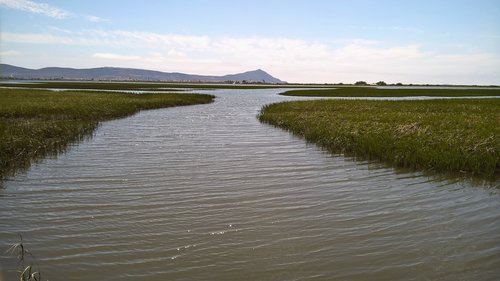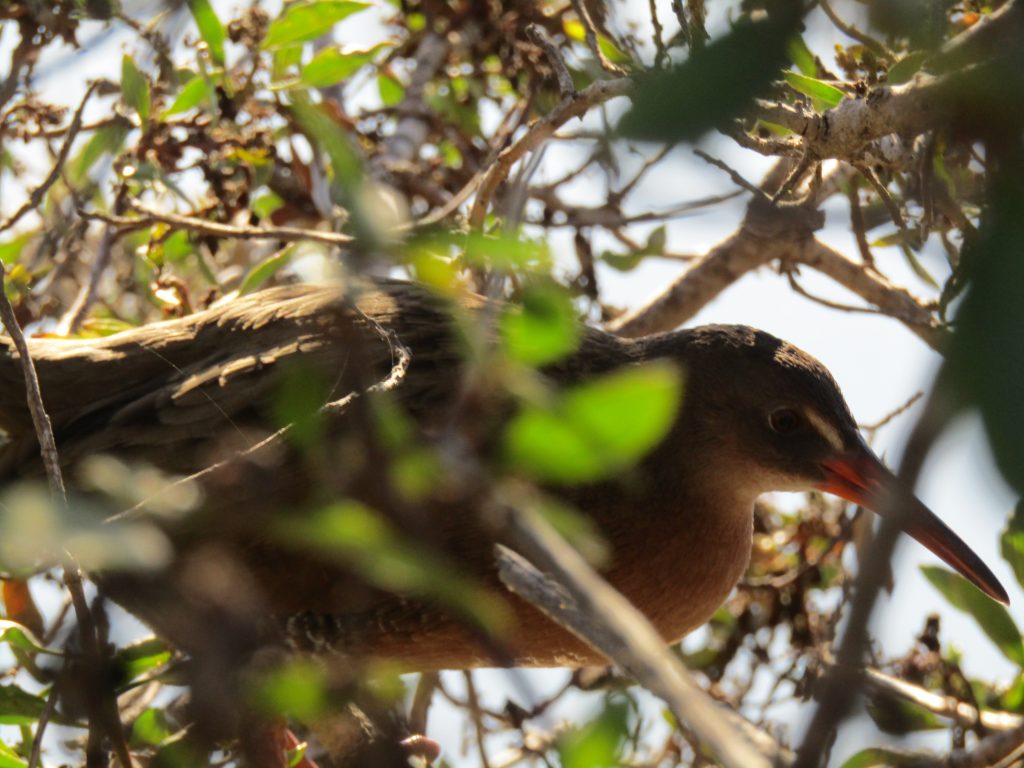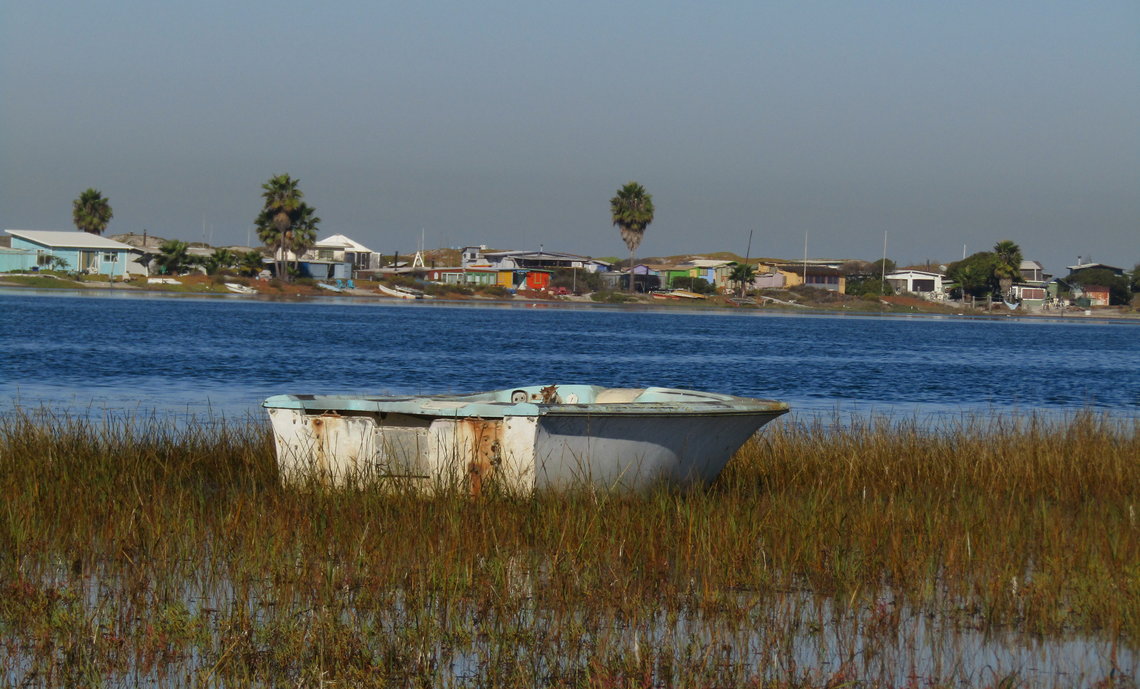By Hiram Moreno Higareda, Pro Esteros, Research Department, and Horacio de la Cueva, Principal Researcher, Center for Scientific Research and Higher Education of Ensenada, B. C.
The Punta Banda Estuary, visible from a big part of the city of Ensenada, Mexico is a biodiversity hotspot boasting biological and cultural wealth. We can watch seals sunbathing, and it is an important spot for local and regional fisheries. Punta Banda is an essential link within the Pacific Flyway migration route for many shorebirds and waterfowl that arrive every winter, as well as summer breeding grounds for Least Tern, and home to several species of herons. The variety of invertebrates and vertebrates living in the estuary results from primary productivity in the water, in mud flats, and in the estuary’s dunes.

Just as the estuary shows great richness and abundance of plants and animals, it also keeps secrets. One of the biggest secrets of Punta Banda Estuary is the presence of the Light-footed Ridgway’s Rail (Rallus obsoletus levipes), a cryptic bird with a small population. They live on the edge between the water that comes in and out of the estuary and the plants that make up its characteristic marsh habitat. Because they are quiet, secretive, and shy, they go unnoticed most of the time. We estimate that there are about 160 of these birds in the estuary year-round, and that population seems stable.
However, they not only live at the edge of ecosystems, but the edge of extinction. This bird needs a healthy estuary in order to live, and up until now, it has found a home and shelter. But threats to the estuary and the rail continue to rise. Invasive species, feral dogs, the surrounding urban and agricultural growth, and climate change threaten the coastal wetland of Punta Banda and the rail. Although legally protected in both Mexico and the US, it is essential that we step up our efforts in order to guarantee its survival. We need a protection formula that allows Ensenada to care for its landscape, because the rail’s health depends on the health of the ecosystem.

As climate change alters the estuary’s features, we must adopt measures so that this place and the rail continue to be part of Ensenada Bay’s appeal. We have already discovered an impact of great concern due to this environmental phenomenon. Rail nests have a structure that allows them to move with the tide, but we have observed a loss of nests during exceptionally higher tides. After an event like this we can lose up to 50% of the nests, a serious threat to the survival of the species. We have noticed that these rails climb closer and taller shrubs to get away from flooding during tides, but this behavior will not guarantee its persistence.
In previous years we had seen a pack of feral dogs that, according to the locals, had been present for at least 5 years. They were preying on birds and small mammals within the rail’s habitat. The pack was later eradicated after the proper report to the municipal animal control, because its presence represented a risk factor in the site.
The estuary is a tourist attraction in Ensenada, for local residents as well as visitors from all over the state, from the US, and the rest of the world, that come to enjoy the beaches and the landscapes, some for a day or a weekend, and many have purchased properties next to the estuary. This human pressure over the estuary is a risk on its well-being that can be turned into a conservation agent if the right strategy is applied, along with controlled activities such as ecotourism and environmental education, and other sustainable activities that allow enjoying the landscape without negatively affecting it.
The Light-footed Ridgway’s Rail is a creature adapted to live on the edge of wetland ecosystems. Of course, wetlands are also on the edge due to the long-lasting threats that development imposes. Our job is to reduce these threats and that the edge of the wetlands and the Light-footed Ridgway’s Rail become an example of conservation and resilience for present and future generations.

